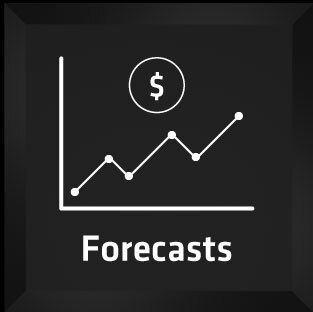August 6th, 2025 - In this paper, we analyze liquidity in June compared to July. Liquidity improved in July for interest rate and major equity index futures, especially VIX, with larger quote sizes and lower volatility.
Read MoreJune 27th, 2025 - QB employs a tie-break algorithm in its Smart-Order-Router (SOR) to determine the optimal venue for sending aggressive cash treasury orders when multiple venues offer the best price.
Read MoreJune 12th, 2025 - In this paper, we propose a new model for passive order placement in smart order routing (SOR) for cash treasuries, designed to improve the estimation of order fill times and thereby enable more effective size allocation across venues by minimizing time to fill.
Read MoreMay 13th, 2025 - In this note, we illustrate a specific difficulty that arises when posting passively in markets that use a pro-rata matching policy, such as CME treasury calendar spreads.
Read MoreApril 10th, 2025 - This whitepaper examines the optimal wait time for executing basis trades in U.S. treasuries cash and futures markets.
Read MoreJanuary 3rd, 2025 - We outline a simple strategy to make crossing decisions based on the dynamics of the bid-ask spread, comparing its current value to forecast future values.
Read MoreDecember 17th, 2024 - We analyze trends in volumes over the late December period covering Christmas and the New Year. Typically, market volumes drop sharply during this period and so it is important to be aware of this when planning trades. This note is intended as a guide for such planning with the expectation that the same volume patterns will occur this year.
Read MoreNovember 8th, 2024 - We implement a new logic for the On-The-Run Treasuries Smart Order Router (SOR) for aggressive crosses, which allocates quantities across venues based on a ranking algorithm that uses the venues’ market impact and fill ratio.
Read MoreNovember 5th, 2024 - In the spring of 2024, QB began a project to improve algorithm behavior, especially for small-tick assets: those with bid-ask spread larger than the minimum price increment, and with thin order books having small size and few orders.
Read MoreJuly 17th, 2024 - We recently improved our algo performance in rolls by fine-tuning our aggressive cross signal and improving our accuracy in tracking our queue position. Read more.
Read MoreJuly 17th, 2024 - QB’s algos combine market state identification in real-time with fill probability for dynamic limit order placement and other hyperparameters for order placement.
Read MoreFebruary 25th, 2024 - The net asset manager’s (AM) position of the U.S. 10-year futures from the Commitment of Traders (COT) report is at a 3-year high. The Figures show credibility to our roll forecasts model.
Read MoreJanuary 25th, 2024 - In this article, we will mainly look at month-end intra-minute volume profiles of Cash Treasury around the benchmark timing of 4:00 p.m. Eastern Time. Additionally, we also analyze the price profiles around the benchmark timing.
Read MoreNovember 20th, 2023 - Our recent research examines how block trades impact futures markets and interest rate product calendar spreads.
Read MoreSeptember 15th, 2023 - This paper provides comprehensive details of robust regression, which was referenced in our previous paper, "Robust Cost Modeling."
Read MoreSeptember 15th, 2023 - The purpose of this note is to contrast the usual ordinary least squares regression (OLS), which uses a normal error model, against a robust model that uses a log-cosh error model as described in the paper.
Read MoreJune 26, 2023 - In this paper, we use the concept of cross-correlation to assess the pairwise cross-impact between futures and different cash Treasury venues.
Read MoreMar 31, 2023 - We provide proof of concept solutions to solve trade execution problems using deep reinforcement learning (RL) and classical methods.
Read MoreMar 9, 2023 - ASX 3-Year futures (YT) tick size was increased in October 2022. This paper aims to analyze the impact of the tick size increment on the microstructure changes.
Read MoreJan 3, 2023 - In this paper, we analyze the cash Treasury volume profiles to improve our volume modeling according to the recent changes in the market structure.
Read More























